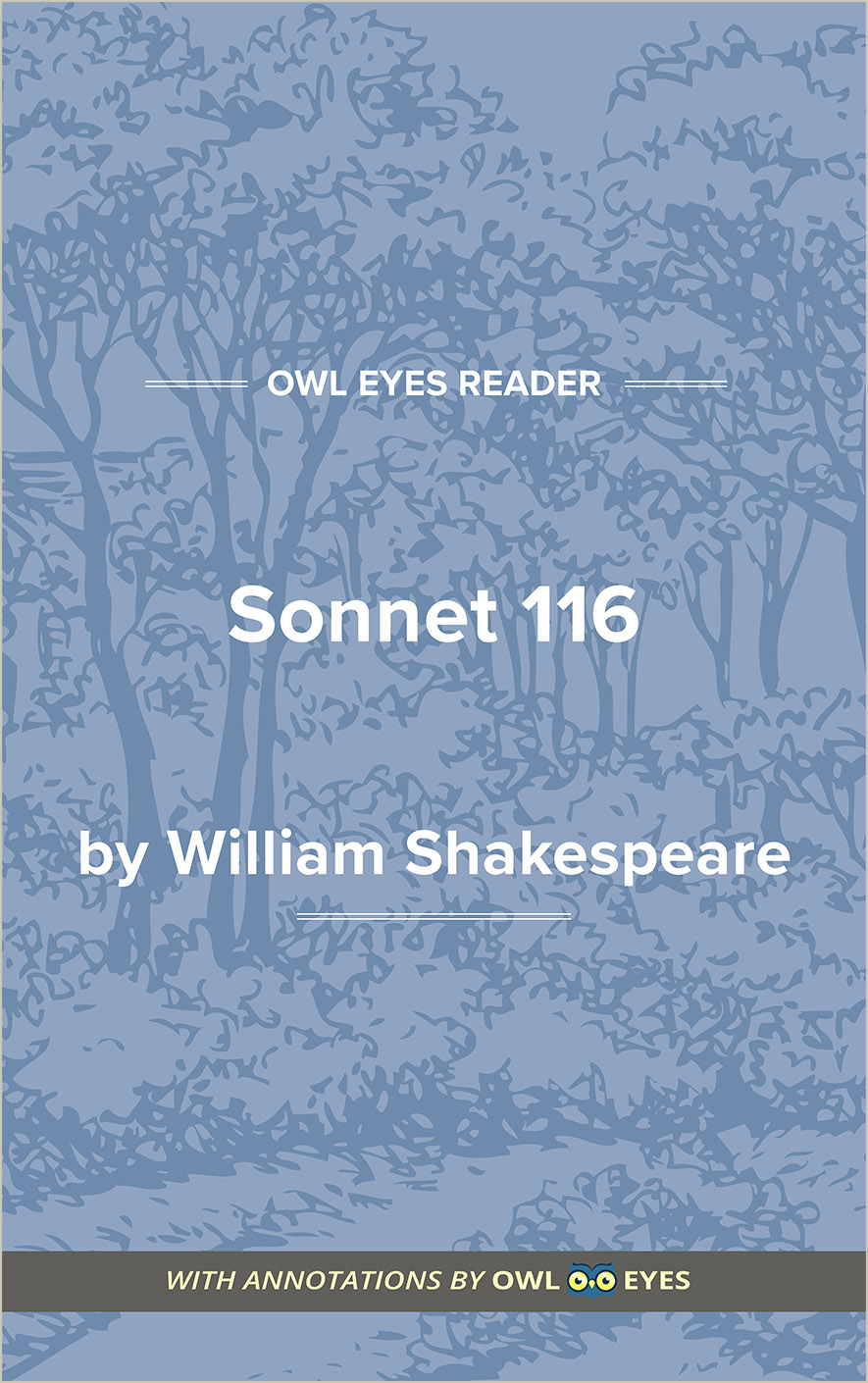- Annotated Full Text
- Literary Period: Renaissance
- Publication Date: 1609
- Flesch-Kincaid Level: 7
- Approx. Reading Time: 0 minutes
Sonnet 116
In Sonnet 116, the speaker sets aside the specifics of his relationship with the fair youth to meditate on the idealized model of romantic love. The speaker differentiates between platonic and erotic modes of love, pointing to the former as the stronger of the two. In the first quatrain, the speaker takes a legal tone, borrowing language from the Book of Common Prayer. According to the speaker, lovers in an ideal relationship do not seek to change one another, to “alter when it alteration finds.” He then likens love to a star that guides ships at sea. Love, then, is an “ever-fixed mark” which all humans strive for but fail to meet. Its “worth’s unknown,” as the speaker puts it. The speaker undermines the value of erotic love in the third quatrain, referring to that domain of “rosy lips and cheeks” as “Time’s fool.” Platonic love, by contrast, is timeless and unwavering. The speaker ends the sonnet with a pointed, defensive challenge to the reader. If his model of love is false, “I never writ, nor no man ever loved.” Bold words indeed.
- Annotated Full Text
- Literary Period: Renaissance
- Publication Date: 1609
- Flesch-Kincaid Level: 7
- Approx. Reading Time: 0 minutes

